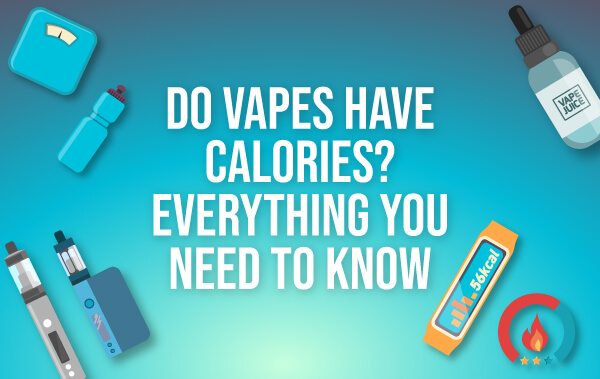The world of vaping has seen a tremendous surge in popularity over the past decade, igniting various questions about its potential health impacts. A curious question often raised is, “Does vaping have calories?” Keystone Vape has conducted extensive research into the components of e-cigarettes and e-liquids, their caloric content, and potential implications on weight and overall health. In this article, we delve into the details to demystify the enigma around calories in vaping.

Vaping: Unveiling the Core Components
Before we address the caloric conundrum in vaping, it’s crucial to understand the primary components of e-cigarettes and e-liquids. E-cigarettes, colloquially known as vapes, are devices that heat a liquid—commonly referred to as vape juice or e-liquid—into an aerosol that users inhale. This process revolves around three main components:
- Atomizer: This heating element vaporizes the e-liquid.
- Battery: The power source for the atomizer.
- Cartridge or Tank: The component that holds the e-liquid set to be vaporized.
The Ingredients of E-liquids
E-liquids generally contain four main ingredients: Propylene Glycol (PG), Vegetable Glycerin (VG), nicotine, and flavorings.
PG is a colorless, odorless liquid used as a base in e-liquids, found in various food and pharmaceutical applications. VG, another base liquid used in e-liquids, is a thicker, sweeter liquid derived from plant oils. It’s also found in food, cosmetics, and pharmaceuticals.
Nicotine, a stimulant found in tobacco plants, is added to e-liquids in various concentrations, depending on user preference. E-liquids without nicotine are also available.
Lastly, e-liquids are flavored using food-grade ingredients, ranging from traditional tobacco and menthol to fruity, dessert, and candy flavors.
Counting Calories in E-liquids
Both PG and VG in e-liquids have caloric content. PG carries approximately 4.1 calories per gram, while VG has about 4.3 calories per gram. However, when e-liquids are vaporized and inhaled, most of these calories aren’t consumed due to the lungs’ primary function: gas exchange, not nutrient absorption. Thus, the actual caloric intake from vaping is virtually negligible.
Nicotine doesn’t contain any calories, but as a stimulant, it can elevate metabolism, potentially influencing weight and overall health. However, the health risks associated with nicotine, such as addiction and cardiovascular effects, outweigh any potential metabolism-boosting benefits.
Flavorings in e-liquids also contain minimal calories, and like PG and VG, they are not significantly absorbed by the lungs when vaporized. Hence, their caloric impact is negligible.
Does the Caloric Content in Vaping Matter?
When comparing vaping to traditional food intake, the method of intake and the body’s absorption abilities differentiate the two substantially. Food is ingested, broken down in the digestive system, and its nutrients, including calories, are absorbed into the bloodstream. In contrast, the lungs absorb a minimal amount of the components in e-liquids, exhaling most of the vapor. Consequently, the typical caloric intake from vaping is far less than that of eating or drinking.
Given the negligible caloric intake from vaping, it’s improbable that e-cigarette use would significantly impact a person’s body weight. Yet, the broader health implications of vaping should not be overlooked. While often marketed as a safer alternative to traditional cigarettes, e-cigarettes are not without risk. Research reveals that vaping can cause lung inflammation, increase respiratory infection risk, and contribute to heart disease. Furthermore, nicotine addiction remains a significant concern for e-cigarette users.
In conclusion, while e-liquids contain some calories due to PG, VG, and flavorings, the actual caloric intake from vaping is minimal. Most of the vapor is exhaled, not absorbed, resulting in a negligible impact on weight and overall health in terms of caloric content. The health risks associated with vaping, however, should not be disregarded. As the vaping landscape continues to evolve, so should our understanding of its potential implications.










